Best triathlon wheels: Top wheelsets for your bike leg or time trial
The best triathlon wheels help you maintain speed and save watts
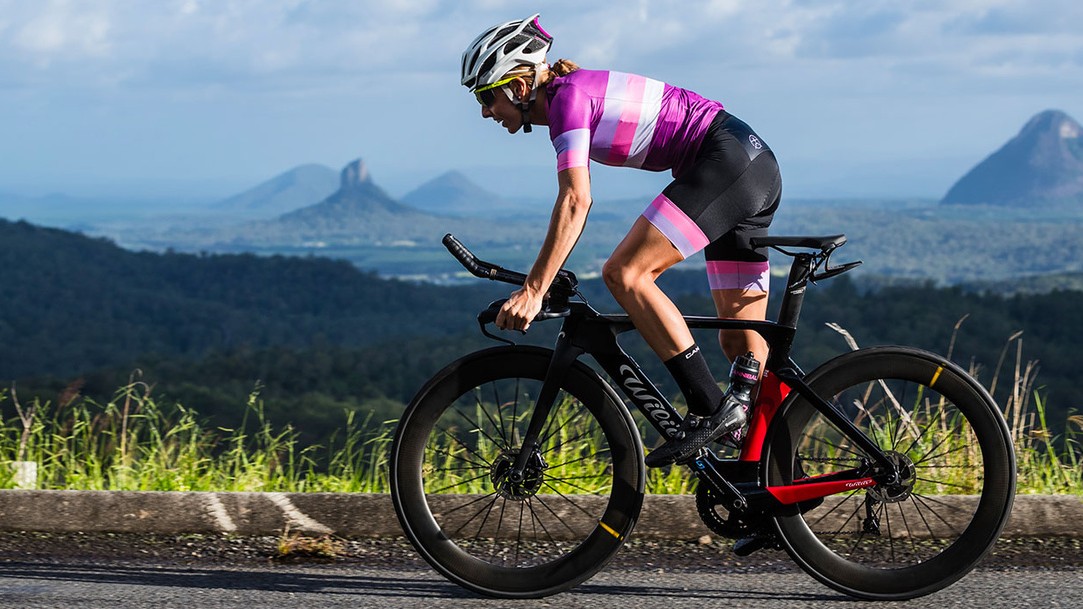
1. Quick list
2. Multi-use wheels
a. Best overall
b. Best value
c. Best of the rest
3. Discipline-specific wheels
a. Best overall
b. Best value
c. Best of the rest
4. How to choose
The best triathlon wheels have highly developed aerodynamics to give you the edge when every second counts. They're optimised for the high speeds that competitors in triathlons maintain and for stability in crosswinds.
Almost all are available for disc brake bikes, but a surprising number can still be found with rim brake tracks, if you're still needing that. Most are now tubeless-ready, but you can still run tubed clinchers in some and there are even tubular wheelsets available, which will save you a few grams.
If you've optimised everything else, from your triathlon bike position on the best triathlon saddle, and you've worked through the various aero gains in order of price and even optimised your time trial helmet, a wheel upgrade is on many riders' wish list. There's some great new tech out there, to help you save seconds in your event, which you can use one of the best triathlon watches to track.
Further down, we've got a guide on what to consider when choosing the best triathlon wheels for your needs, but first here's our pick of the best available.
Quick list
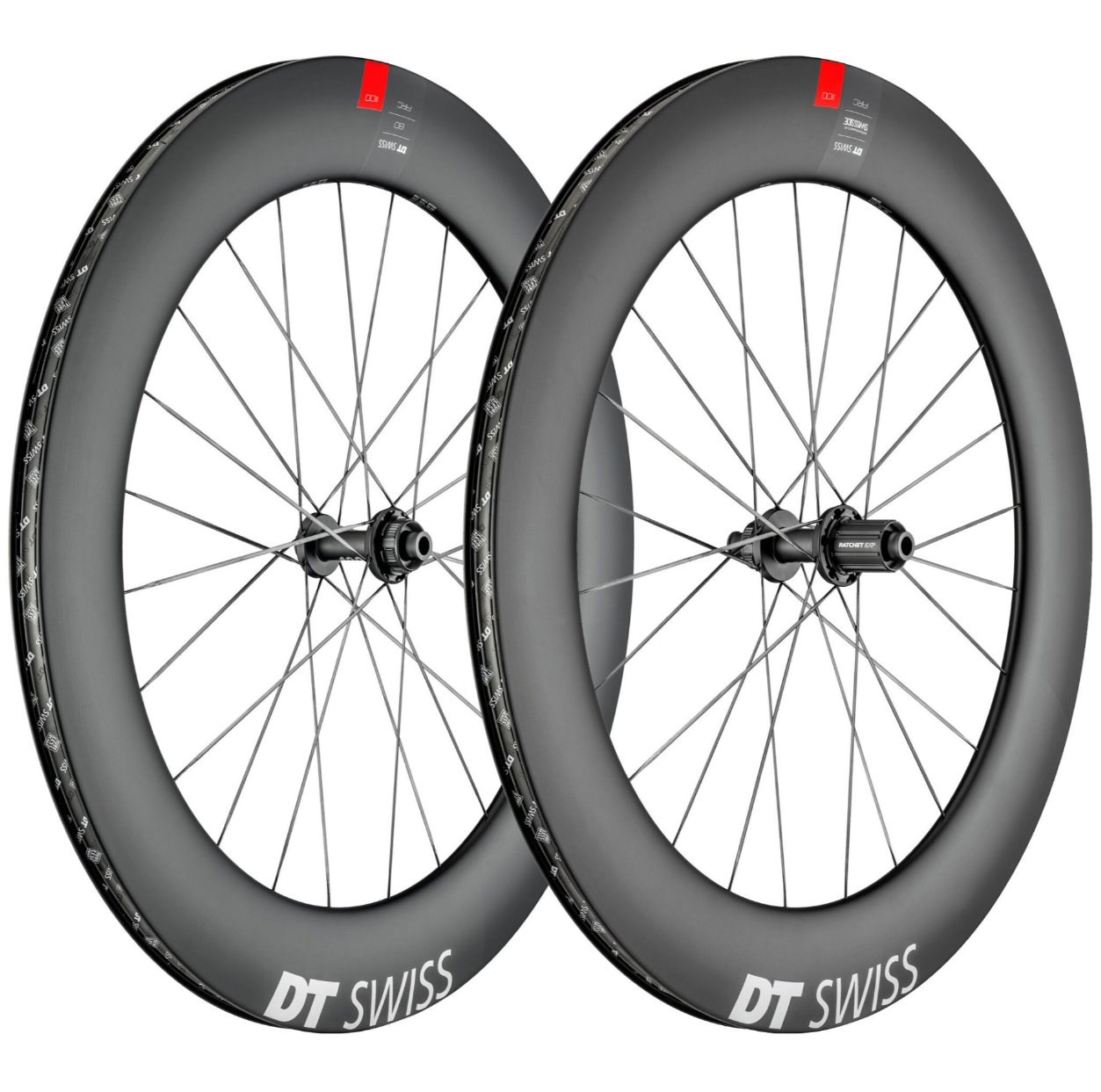
Best overall multi-purpose wheelset
The top three women at Kona in 2022 were riding DT wheels, with this deeper section version of its top spec aero wheelset a popular choice. They come with 80mm rims, DT's renowned hubs, bladed aero spoked and durable construction.
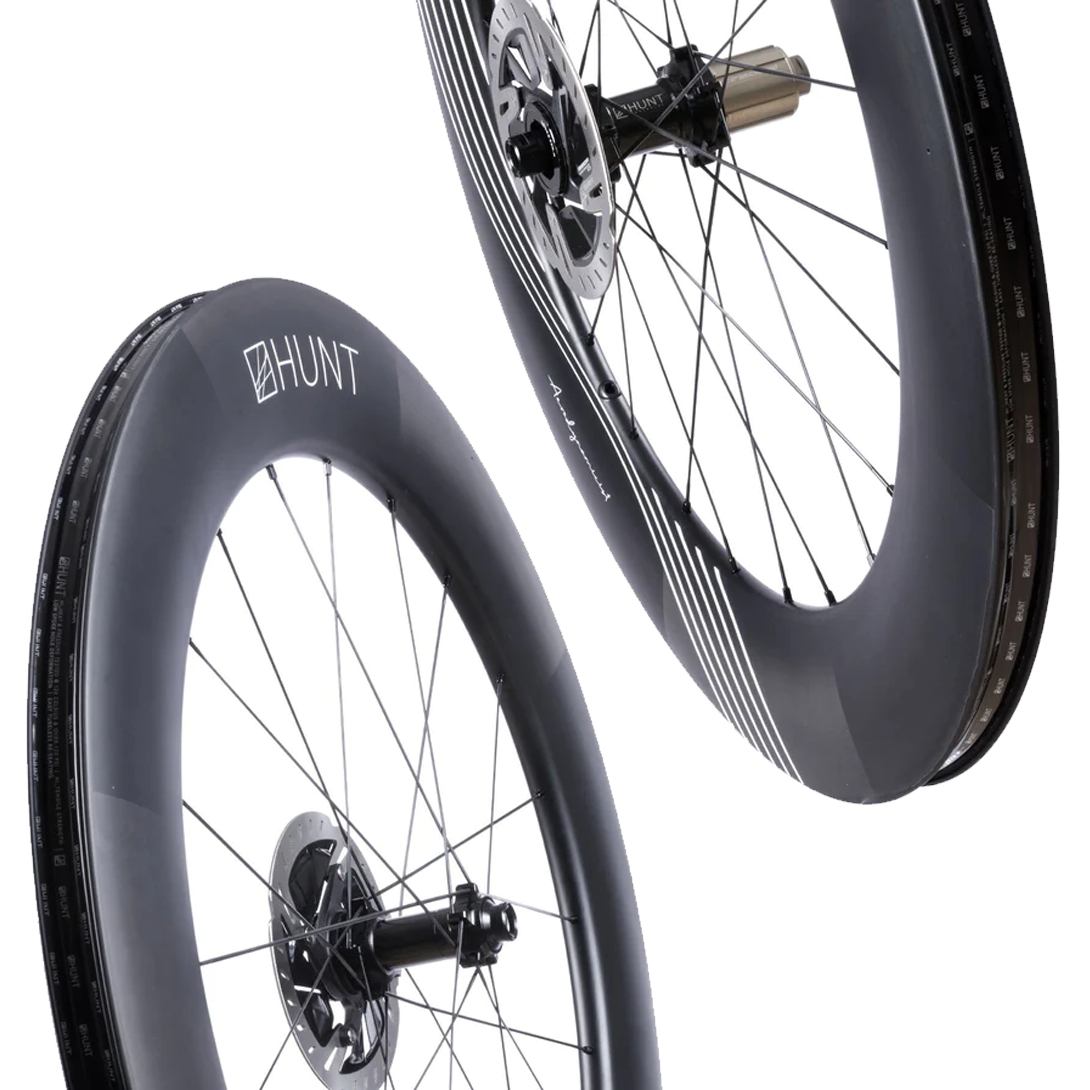
Best value multi-purpose wheelset
Hunt Wheels continues to offer impressive tech at bargain prices. The 8387 Aerodynamicist wheelset is wind tunnel tested for speed and crosswind stability, and punch well above their weight.
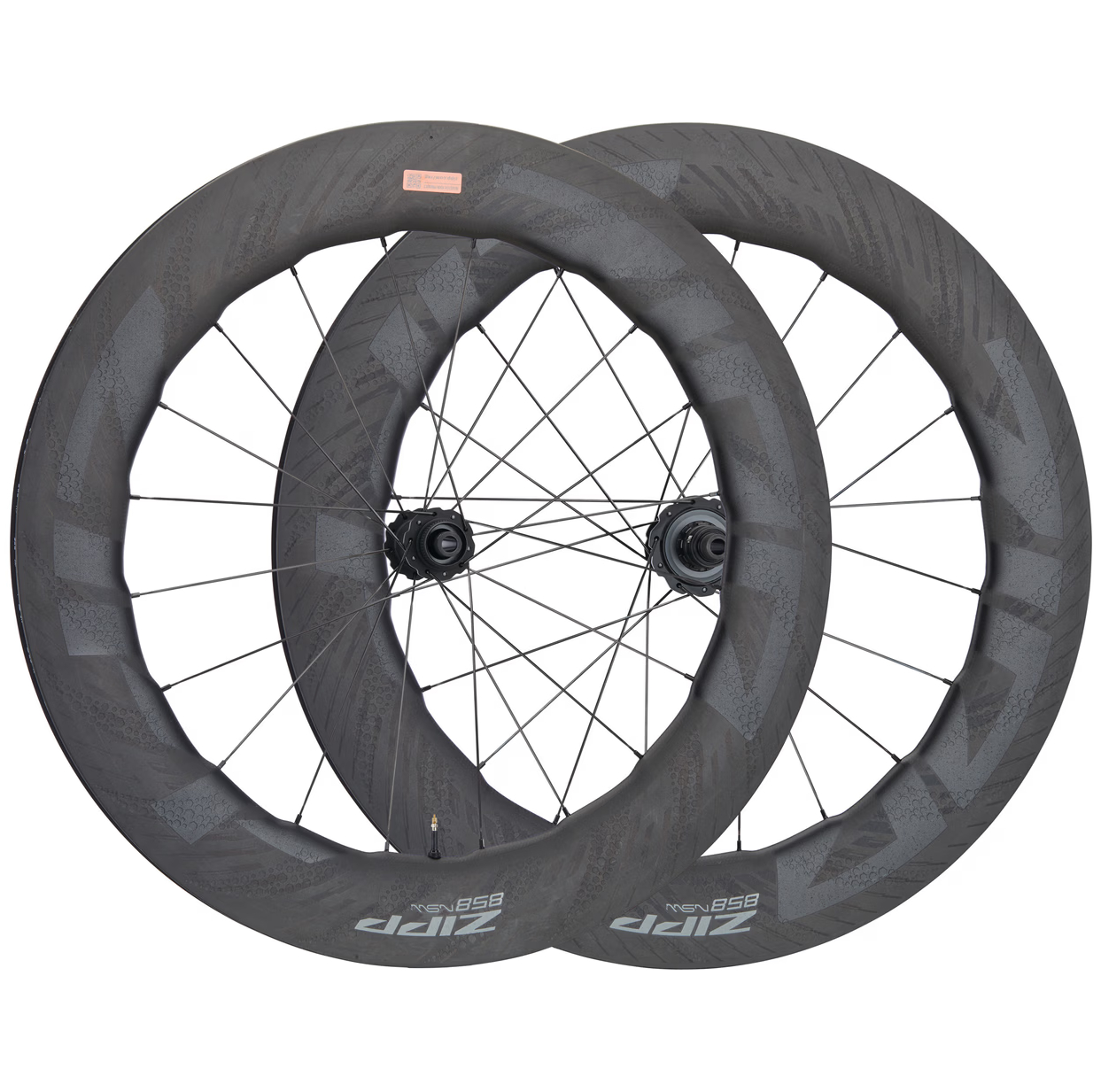
Alternative multi-purpose choice
The most used wheel brand at Kona, Zipp continues to offer top tech in its wheels including the deeper section 858 with its NSW sawtooth design, aimed at increasing wheel stability. They're also impressively light given their depth.
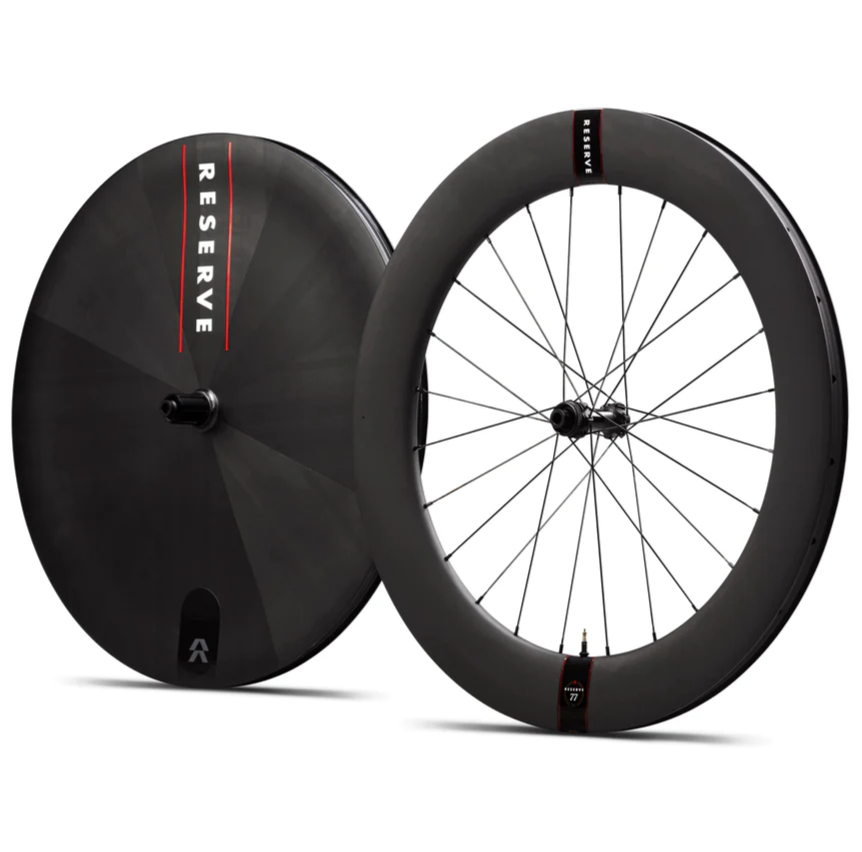
Best overall TT specific wheelset
With Tour de France stage wins beneath Wout van Aert and Jonas Vingegaard, the Reserve wheels are certainly up to task. They feature wide internal rim bed, are designed around 25 and 28mm tyres, and are competitively lightweight.
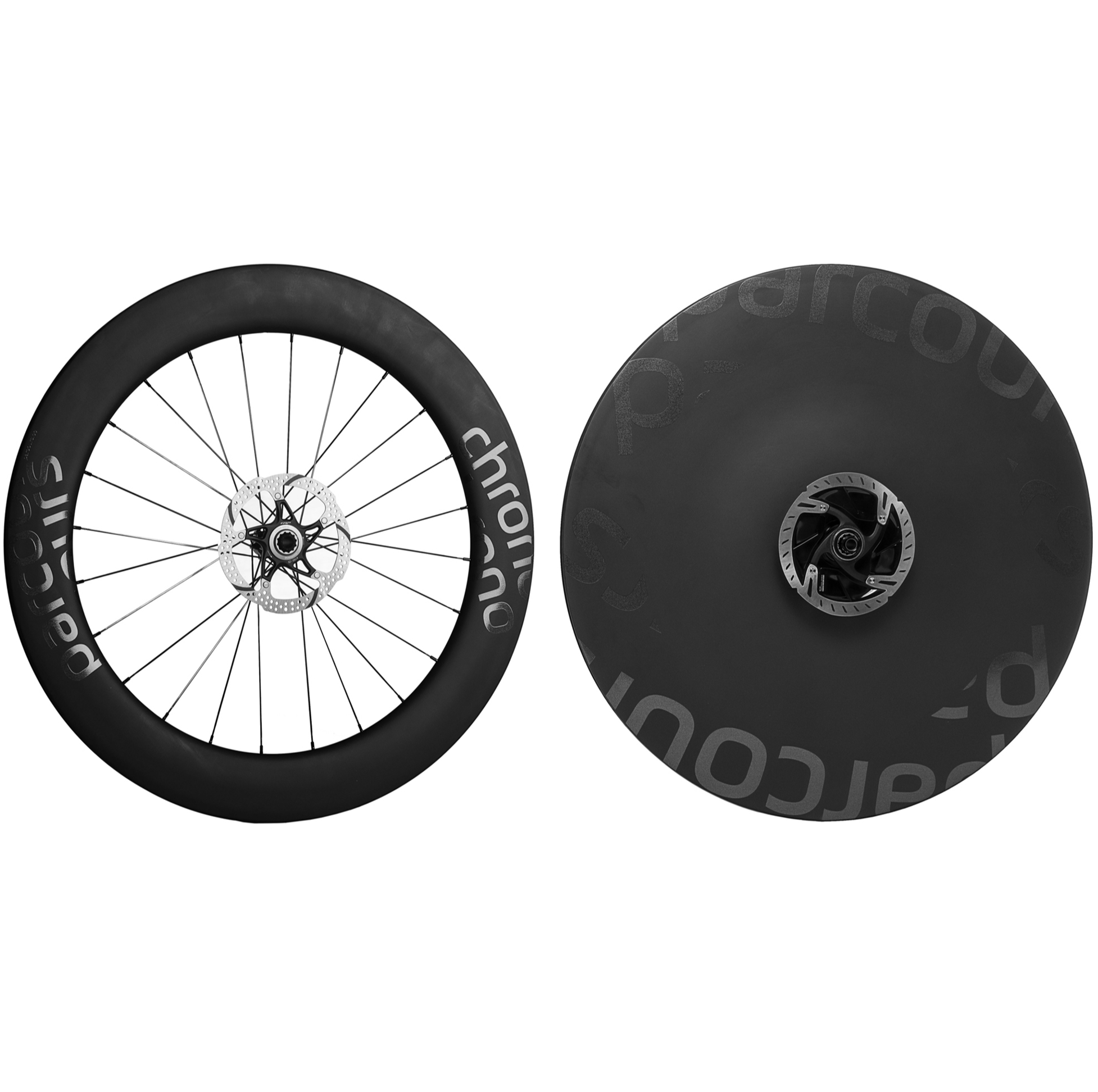
Best value TT specific wheelset
With a 77mm front and solid disc rear, these tubeless-ready disc brake wheels are perfectly up to the task of any time trial or triathlon. They're a touch heavier and narrower than their competitors, but they're significantly cheaper too.
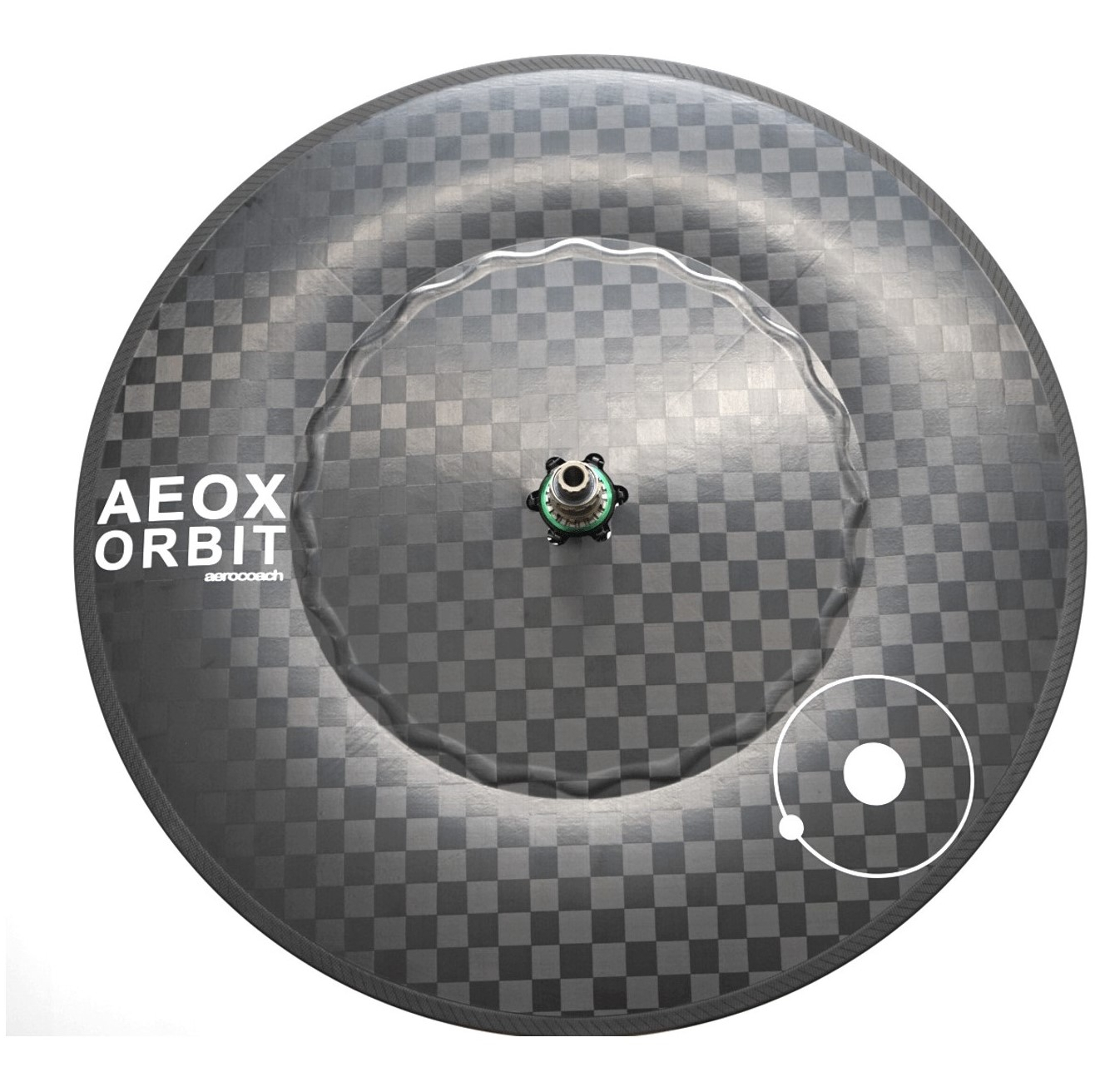
Alternative TT specific choice
AeroCoach builds its Aeox Ultra Orbit rear wheel on 24 internal spokes, which allows it to maintain the wheel's unique profile, low weight and greater comfort. It's actually lighter than some of the multi-purpose wheels, which is impressive.
Best triathlon and time trial wheels
You can trust Cyclingnews
Road bike compatible
We've decided to split this roundup into two parts. Firstly, we'll cover wheelsets that are road bike compatible, and lower down we'll focus on time trial and triathlon specific wheelsets that include trispoke front wheels and/or disc rear wheels.
This first section is the road-compatible group, which include spoked wheels that are legal for competition in mass-start road events. While the pricing of some of these wheels is around the same as a TT-specific set, we believe the added usability offers better value for money. Compared to a disc wheel and a trispoke, they'll usually be a smidge slower, but usually lighter, so they may also be an option if you're doing hillier bike legs or more sporting time trial courses.
Best wheels for road and triathlon use
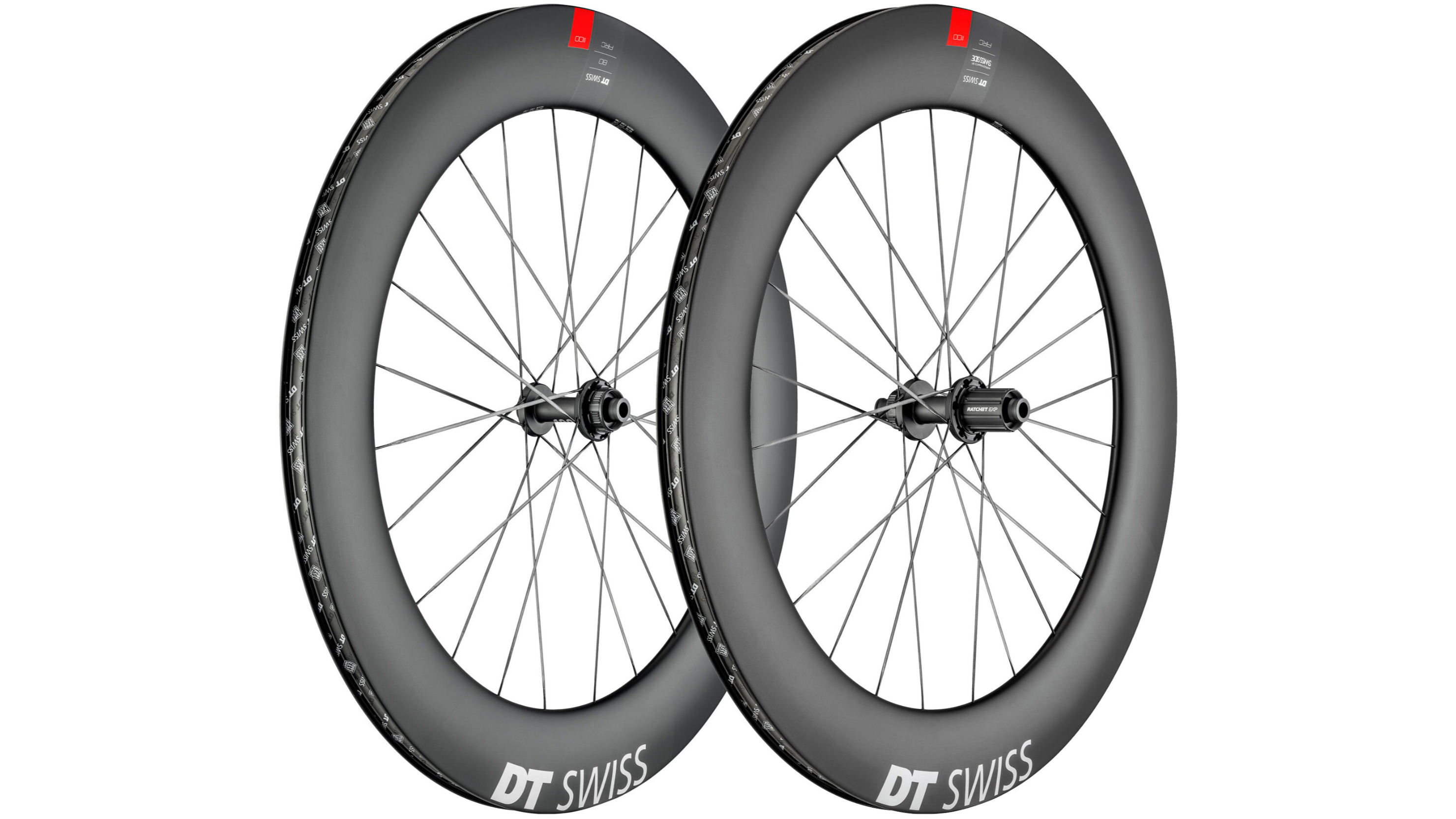
1. DT Swiss ARC 1100 Dicut 80
Specifications
Reasons to buy
Reasons to avoid
DT Swiss is ubiquitous when it comes to hubs. It's no surprise then that the DT Swiss ARC 1100 Dicut features a highly advanced DT Swiss 180 hub. Instead of a pawl-based system it's a ratcheting design. The advantages are quicker engagement with less point loads for greater reliability.
The DT Swiss Ratchet EXP hub also has the benefit of a tool-free design for changing freehub bodies and maintenance. A good hub on a DT Swiss wheel might not be surprising but the partnership with aerodynamic experts Swiss Side means the rim is no slouch either. The ARC 1100 Dicut Disc rear wheel is a fitting complement where allowed.
Best value wheels for road and triathlon use
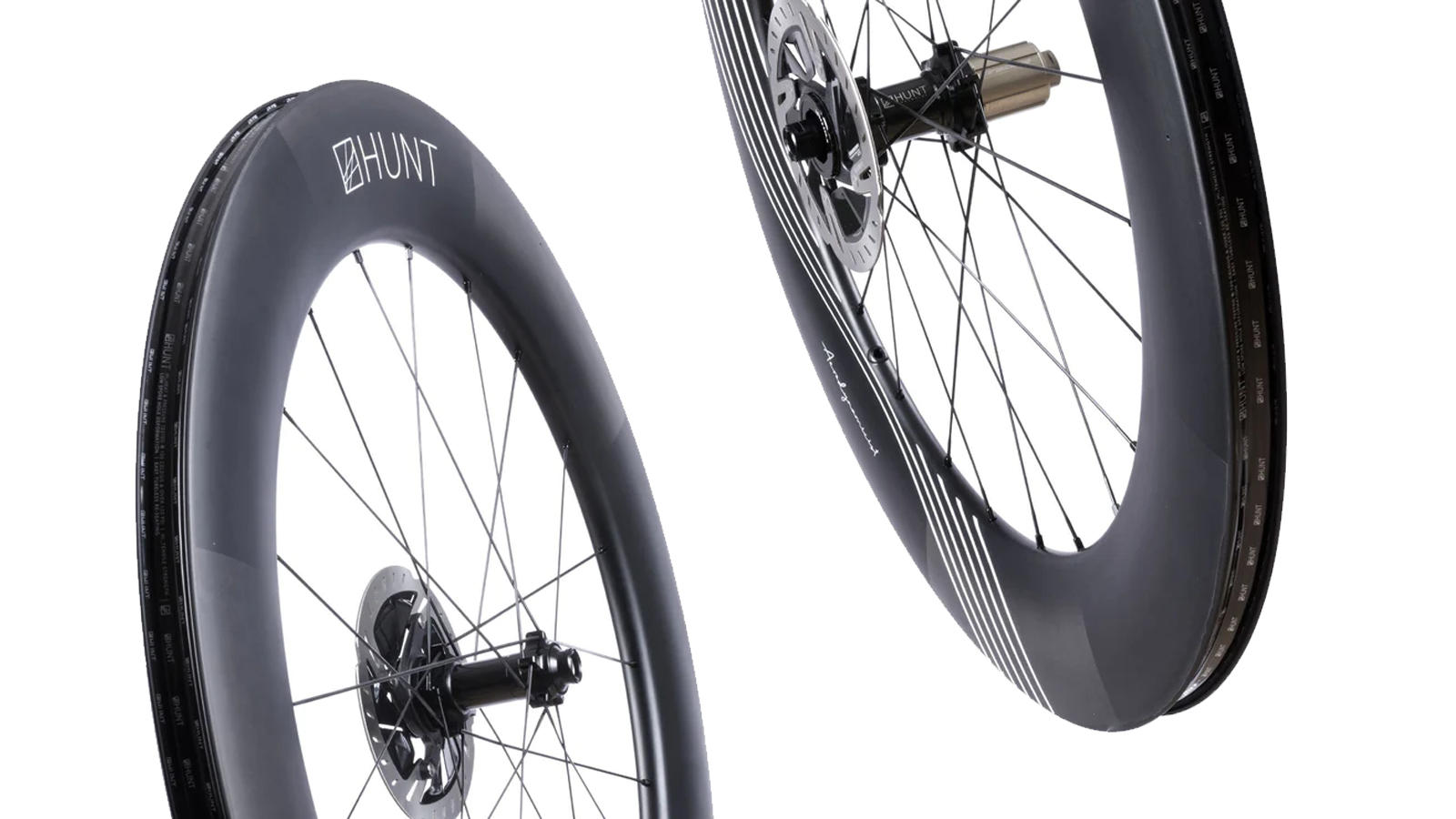
2. Hunt 8387 Aerodynamicist
Specifications
Reasons to buy
Reasons to avoid
The Hunt 8387 Aerodynamicist is the brand's fastest deep section wheelset, wind tunnel tested for speed and crosswind stability. It's still significantly more affordable than many options here.
Ride it when you are training and show up on race day without making any changes. If it's windy then you don't have to worry. Not only is it the perfect place to start but add a solid disc rear from Hunt and you might still come out ahead on pricing.
Alternative wheels for road and triathlon use
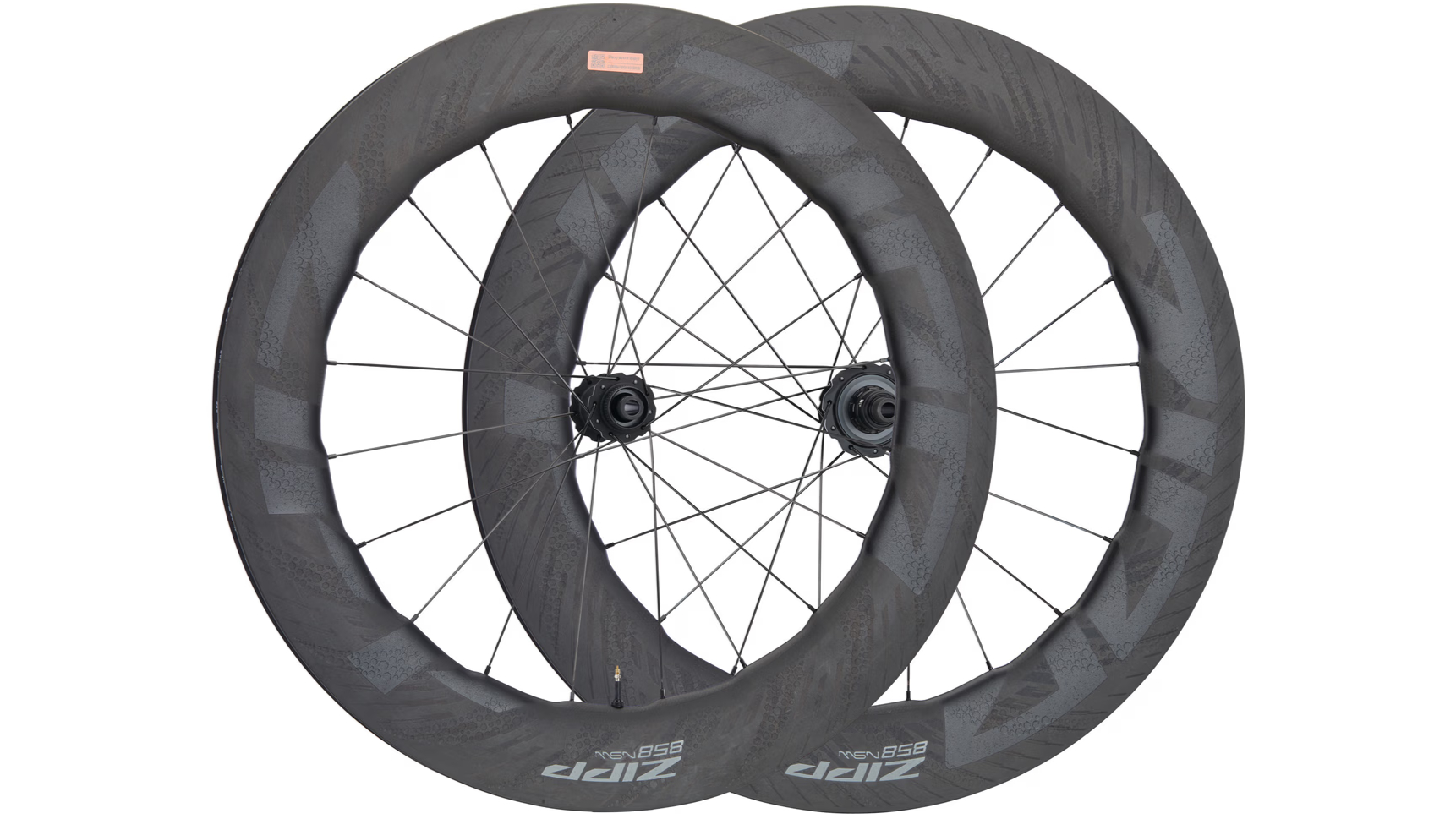
3. Zipp 858 NSW
Specifications
Reasons to buy
Reasons to avoid
Creating a fast wheel is all about keeping the air attached to the surface of the wheel. The advantage of a solid wheel is that there's no space in the middle where the air comes unattached then gets mixed up by spokes. Zipp looked to the natural designs of whales and sharks as inspiration for a better way to keep air attached, and it thinks it's succeeded.
According to SRAM the combination of Hexfin ABLC dimples inspired by shark skin, and the undulating saw tooth rim profile, reduces both aerodynamic drag and side forces. This, combined with an 85mm rim depth makes for one of the best options in crosswinds.
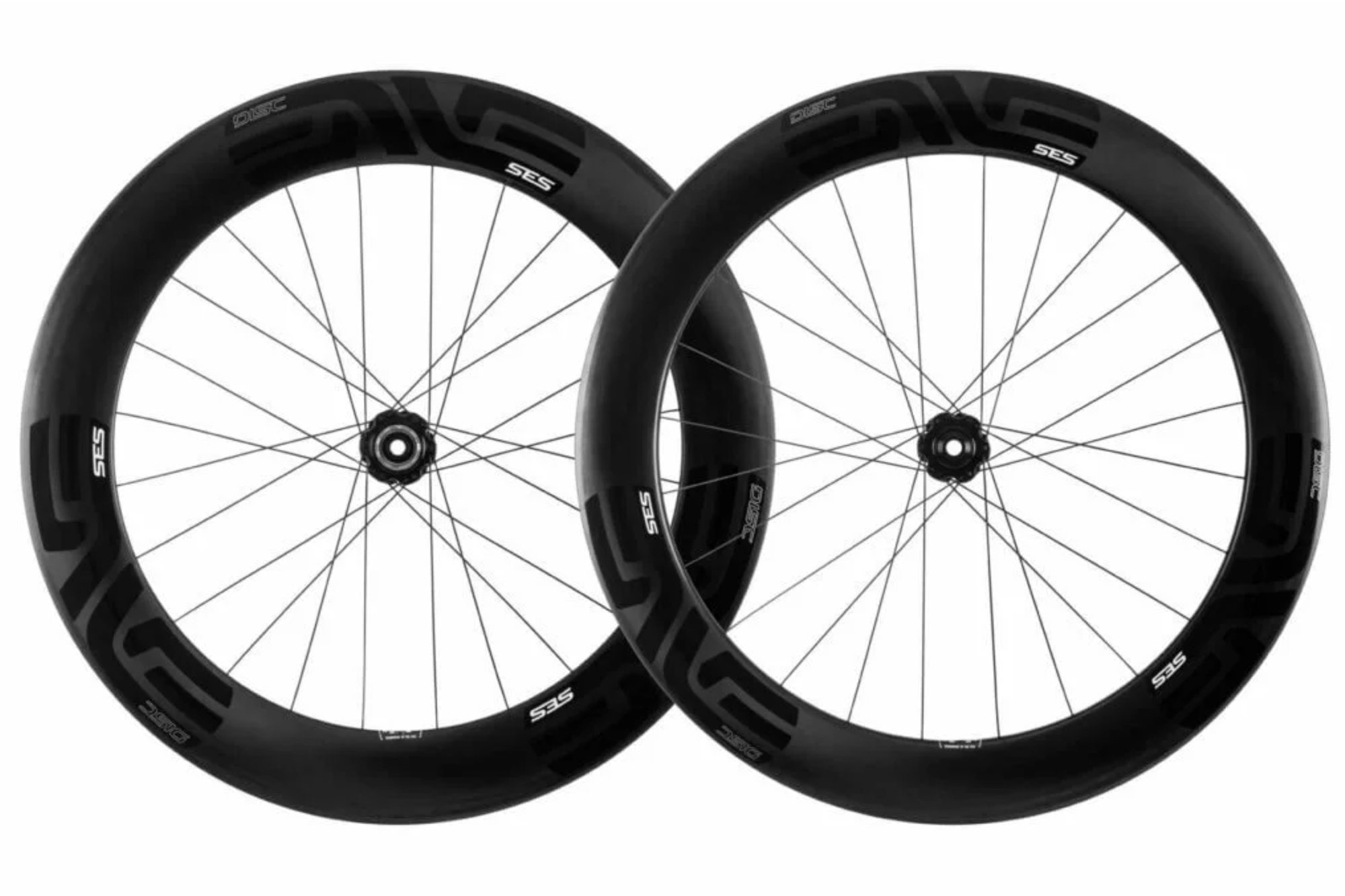
4. Enve SES 7.8
Specifications
Reasons to buy
Reasons to avoid
Deciding the right rim depth is the kind of decision that falls somewhere between black magic and science. It can be daunting, but Enve is willing to go on record with a clear recommendation.
It feels that its SES Disc rear wheel only becomes a benefit above 27mph; anything slower and it recommends the Enve SES 7.8. It's a system with asymmetric rim geometries front to back. The front is a shallower 71mm deep paired with a wider 29mm profile. Then, out back you get an 80mm deep wheel that is 27.5mm wide. More aero, and more stable. It's a win.
Time trial and triathlon specific wheels
In this section we'll focus on the discipline-specific wheelsets. You won't be able to rock up at your local road race or sportive using these, but if you're purely after a wheelset for your triathlons or time trialling, these will offer the best performance in those disciplines.
Best overall time trial / triathlon specific wheelset
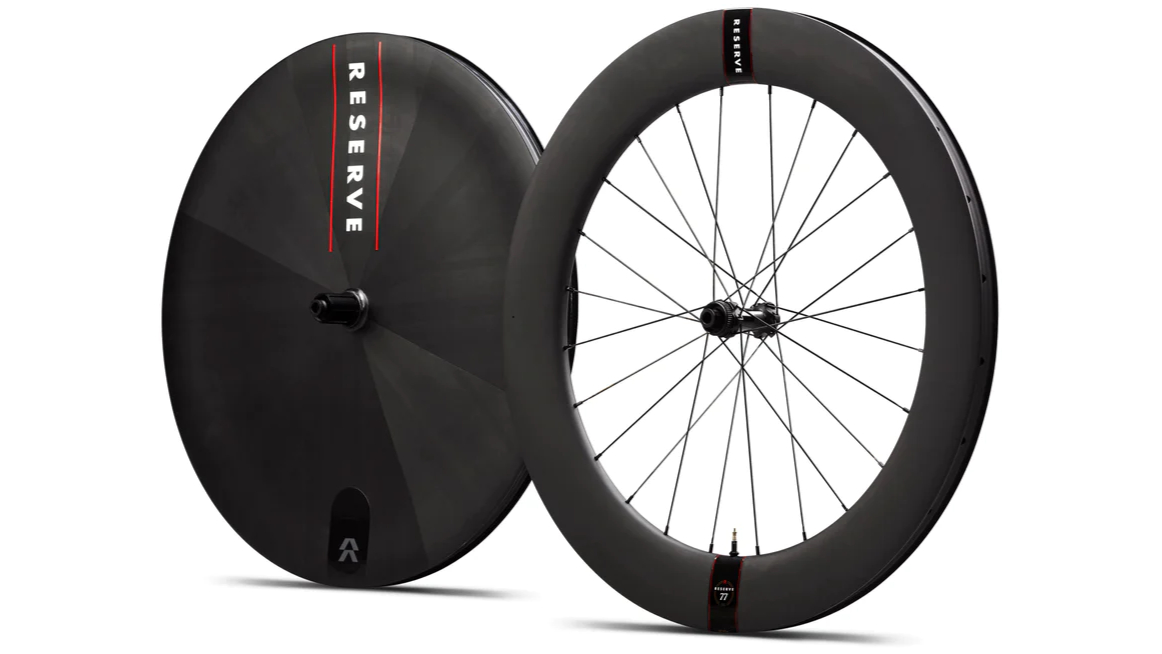
5. Reserve 77/Disc
Specifications
Reasons to buy
Reasons to avoid
With a pedigree including wins at the highest level beneath Jonas Vingegaard and Wout van Aert, there's no denying that the Reserve 77/Disc wheels are up to the task.
Of course, those riders could pedal a bmx to victory, but the Reserve wheelset backs up its pedigree with impressive feature set, including modern 22mm internal widths, rising to 31mm external width up front and 30mm at the rear. The DT240 hubs are trusted by dozens of brands, and we're happy to see them here too.
They're optimised for 25mm or 28mm tyres, and at just 1,755g for the pair, they're really competitive on the climbs too.
Best value time trial / triathlon specific wheelset
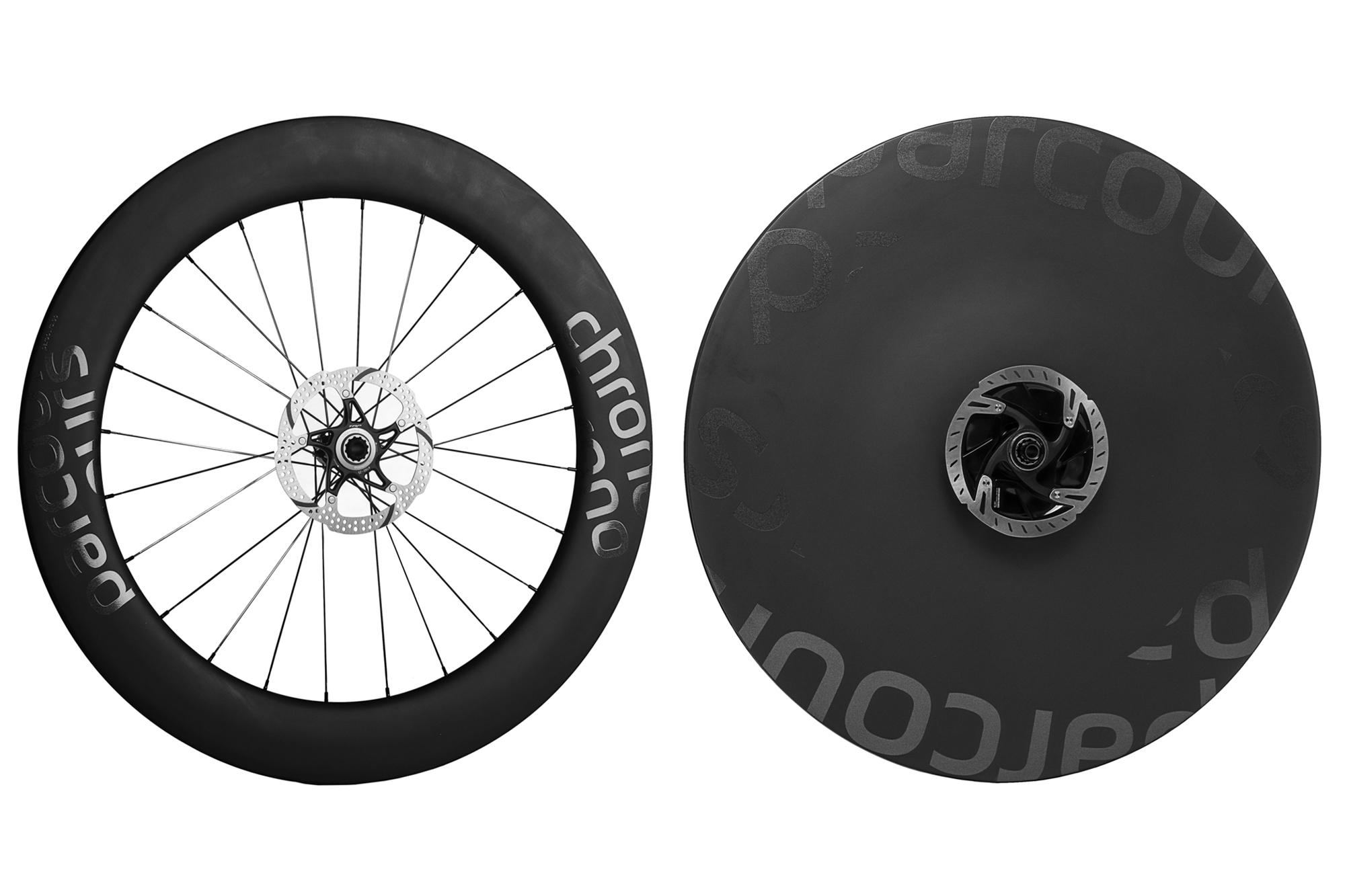
6. Parcours Disc² & Chrono
Specifications
Reasons to buy
Reasons to avoid
Parcours is a brand based in London who is making a name for bringing performance and affordability to the game. There is a single focus on pushing the latest aerodynamic technology at an affordable price. Quality control, design, and support all happens at home while manufacturing gets handled by the experts overseas. It's a successful partnership that leads to a muted and carbon focused aesthetic.
The designs focus on wider, tubeless tyres for the best combination of comfort and speed. In the case of the Disc option, it's a 17.5mm internal design optimized for a 25mm tyre. The design is available for rim or disc brakes.
Alternative TT/Tri specific wheels
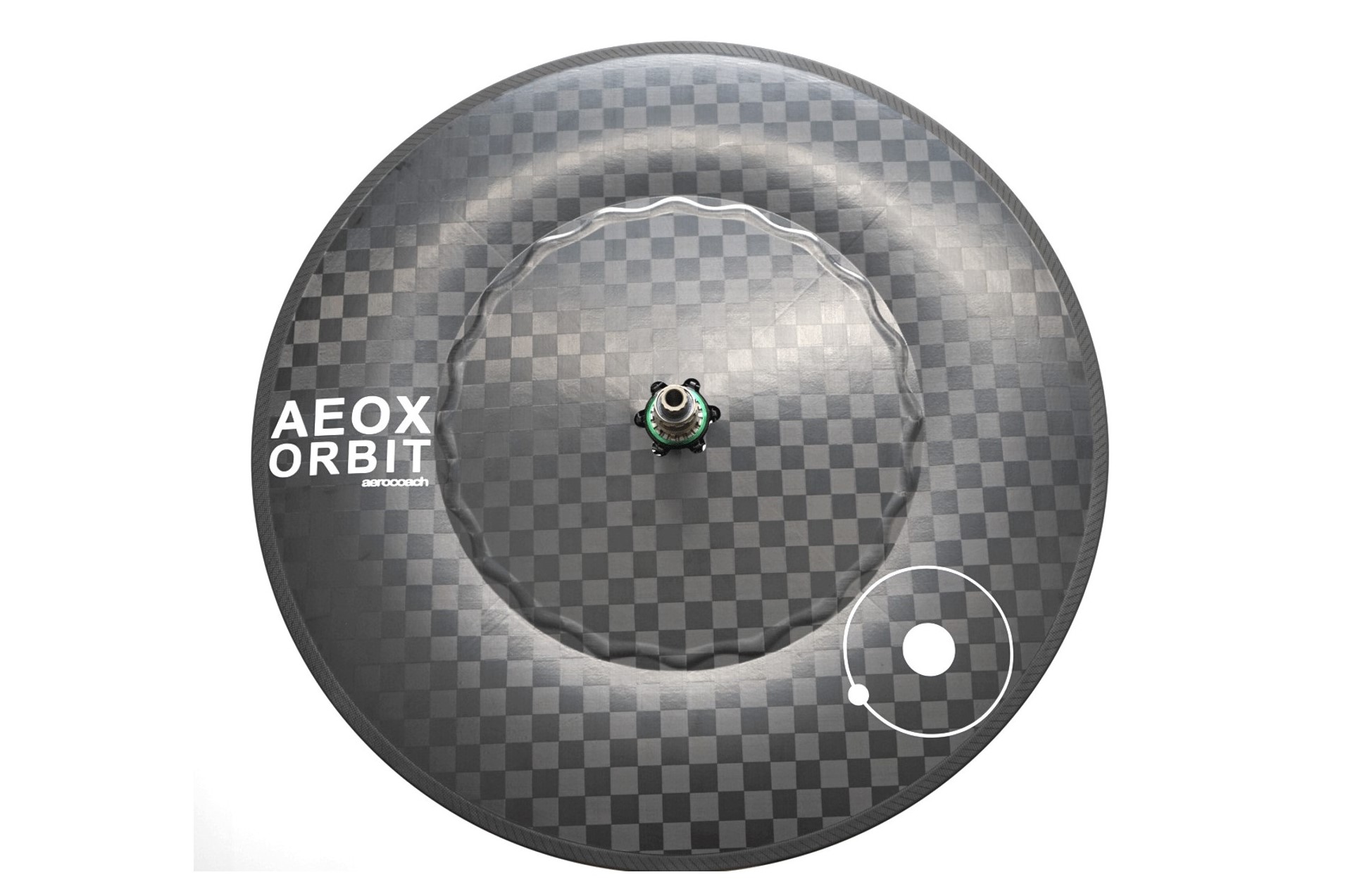
7. AeroCoach Aeox Ultra Orbit Rear
Specifications
Reasons to buy
Reasons to avoid
The AeroCoach Aeox Orbit disc rear wheel is aero optimised to lower drag from the frame, cassette and disc brake rotor. AeroCoach's data indicates lower drag than competitors across a wide range of wind yaw angles.
The rim is aero optimised for tyres up to 28mm wide. It's light too at 980g claimed weight. Inside the shell there are 24 spokes, which allows AeroCoach to maintain its patent pending aero wheel profile, which it says that they also improve comfort over solid wheel construction.
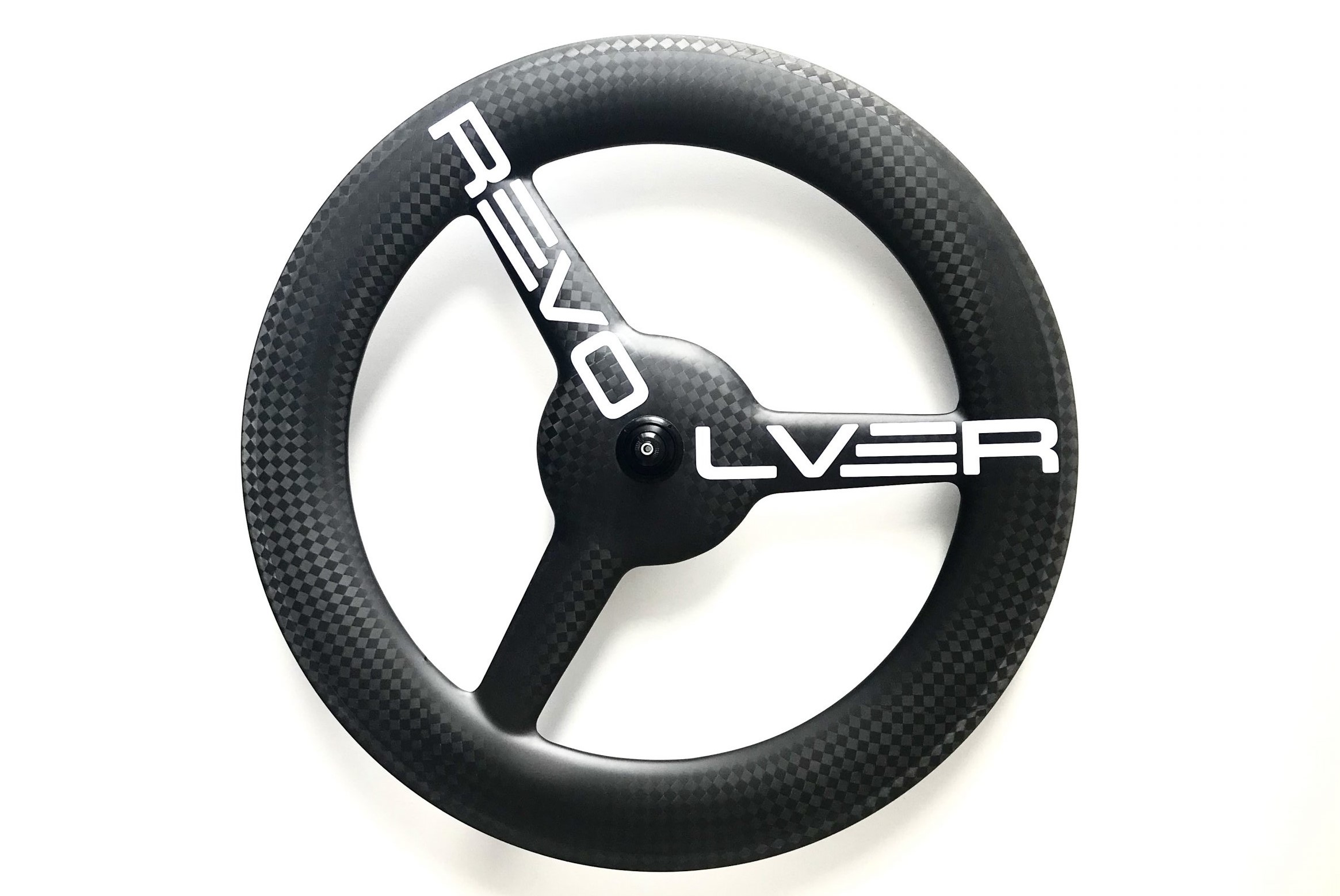
8. Revolver TroikaMax+ Front
Specifications
Reasons to buy
Reasons to avoid
The Revolver TroikaMax+ has a distinctive large hub design and shorter aero section spokes and a deep outer rim, making for aerodynamic efficiency in a non-disc wheel. Revolver says that it functions and handles well at a wide range of yaw angles and wind speeds.
You can choose between tubeless clincher and tubular formats, rim or disc brakes and Shimano HG, SRAM XDR and Campagnolo freehubs for broad compatibility. CeramicSpeed bearings come as standard and you can fit tyres between 23mm and 28mm.
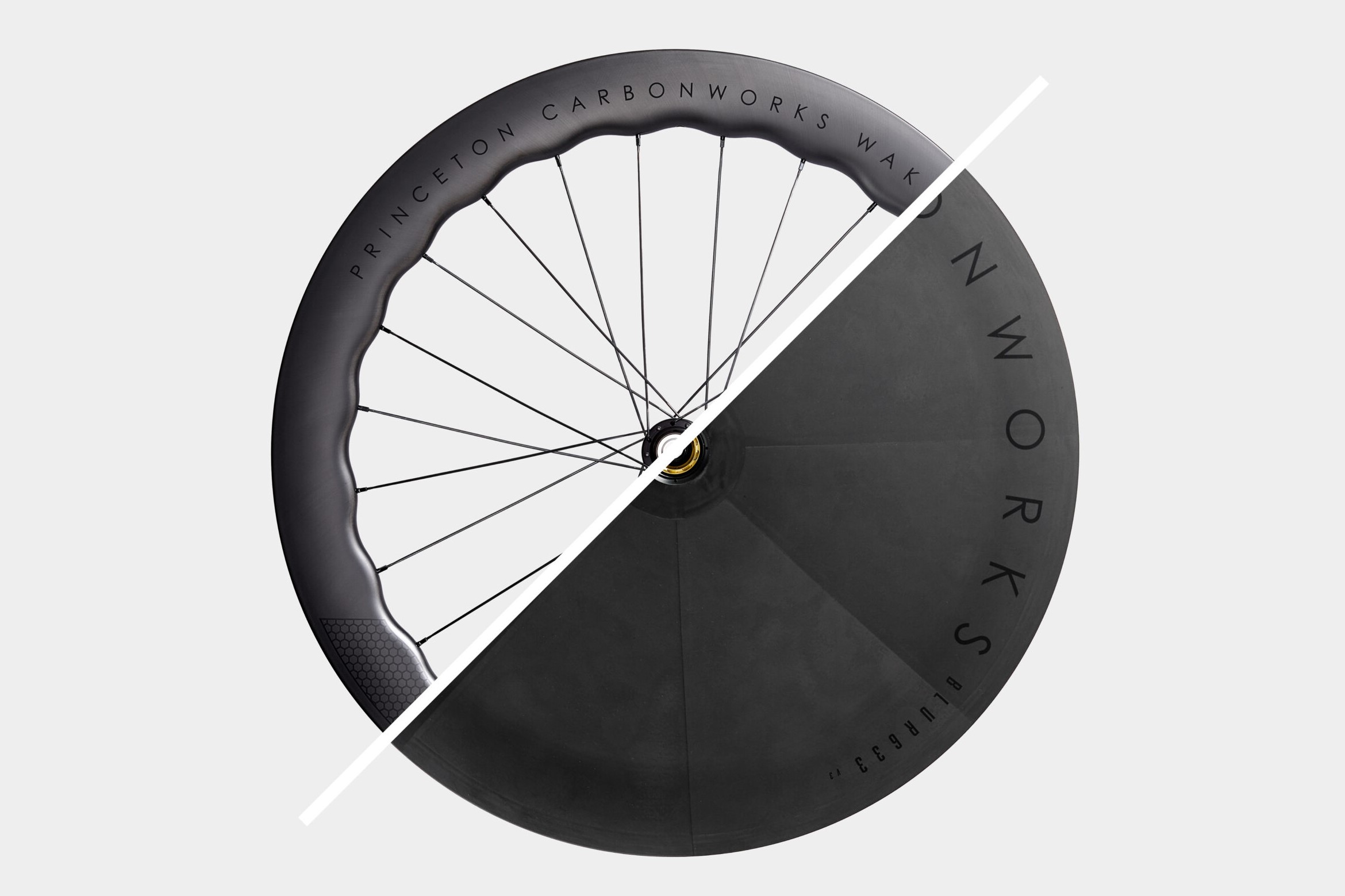
9. Princeton CarbonWorks Wake / Blur
Specifications
Reasons to buy
Reasons to avoid
Princeton CarbonWorks pairs its fastest wheels in this Wake Strada 6560 front and Blur 633 V3 rear set, with a choice of hub internals for the Wake, which is optimised for wider tyres with a 20.5mm internal rim width.
The Blur 633 V3 has an undrilled tyre bead so that no tape is required and is built on Tactic hub intenals as a monocoque for optimum power transfer and low weight.
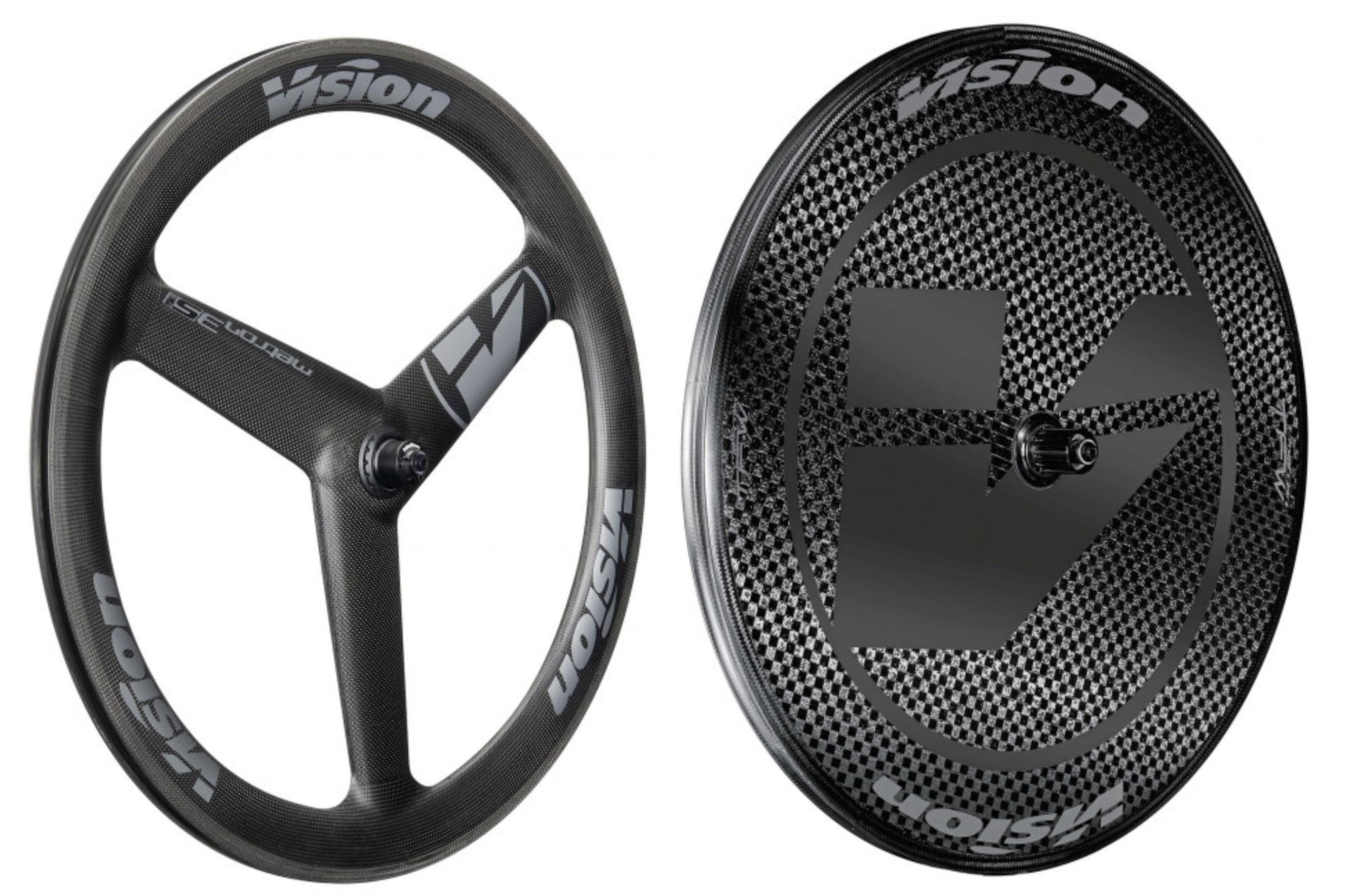
10. Vision Metron 3 Spoke / Disc
Specifications
Reasons to buy
Reasons to avoid
There are brands that make a range of products including those focused on aerodynamics. Vision is a brand born from triathlon with a sole focus on beating the wind to be the fastest in triathlon and time trial situations. It is also a company that works very closely with professional cycling to develop the best products it can.
It's no surprise then that Vision is one of the relatively limited sources for solid spoke front wheels in today's market. Not only does it have a three-spoke front wheel but there are options for disc, rim, tubeless ready clincher, and tubular. Whatever your frame requires there is something to make you as fast as possible.
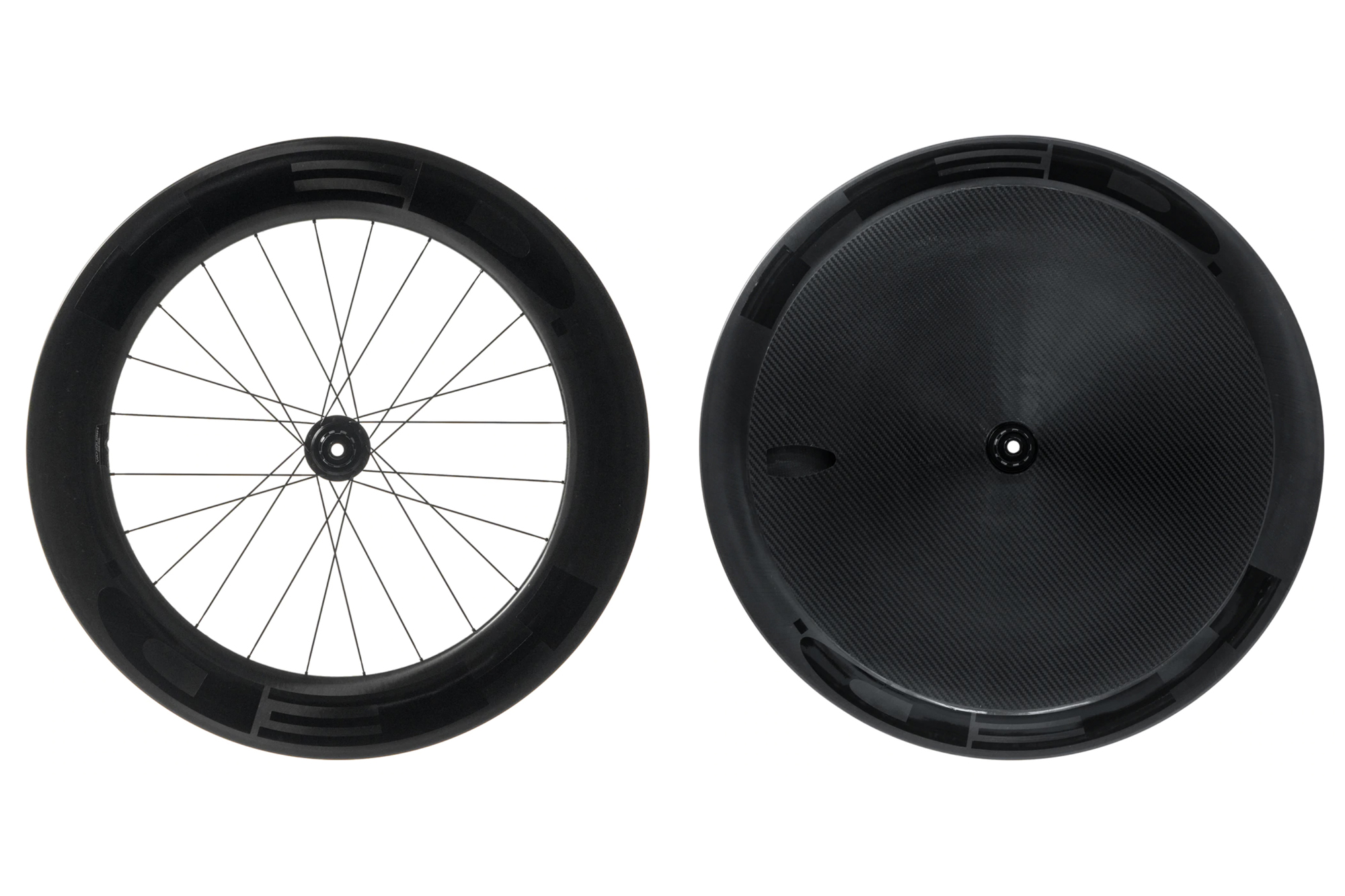
11. HED Vanquish RC8 Pro / RCD Pro
Specifications
Reasons to buy
Reasons to avoid
HED Cycling is a classic American success story that started in a basement with an idea. The idea was for a new kind of disc wheel for triathletes and 37 years later it is still manufacturing innovative products in the US.
The Vanquish RC Pro series goes all in on full carbon and disc brakes. The innovation is all about making the rim wider than the tyre and HED claims to be the holder of the patent for the most aerodynamic bike wheel in the world. That means you can pick and choose anything in the series and put together a package that works for you. Whatever you pick it's going to be fast.
If your event follows Kona rules or you expect windy conditions, there's also the option of the HED Jet RC180, the closest thing to a disc wheel that isn't a disc wheel.
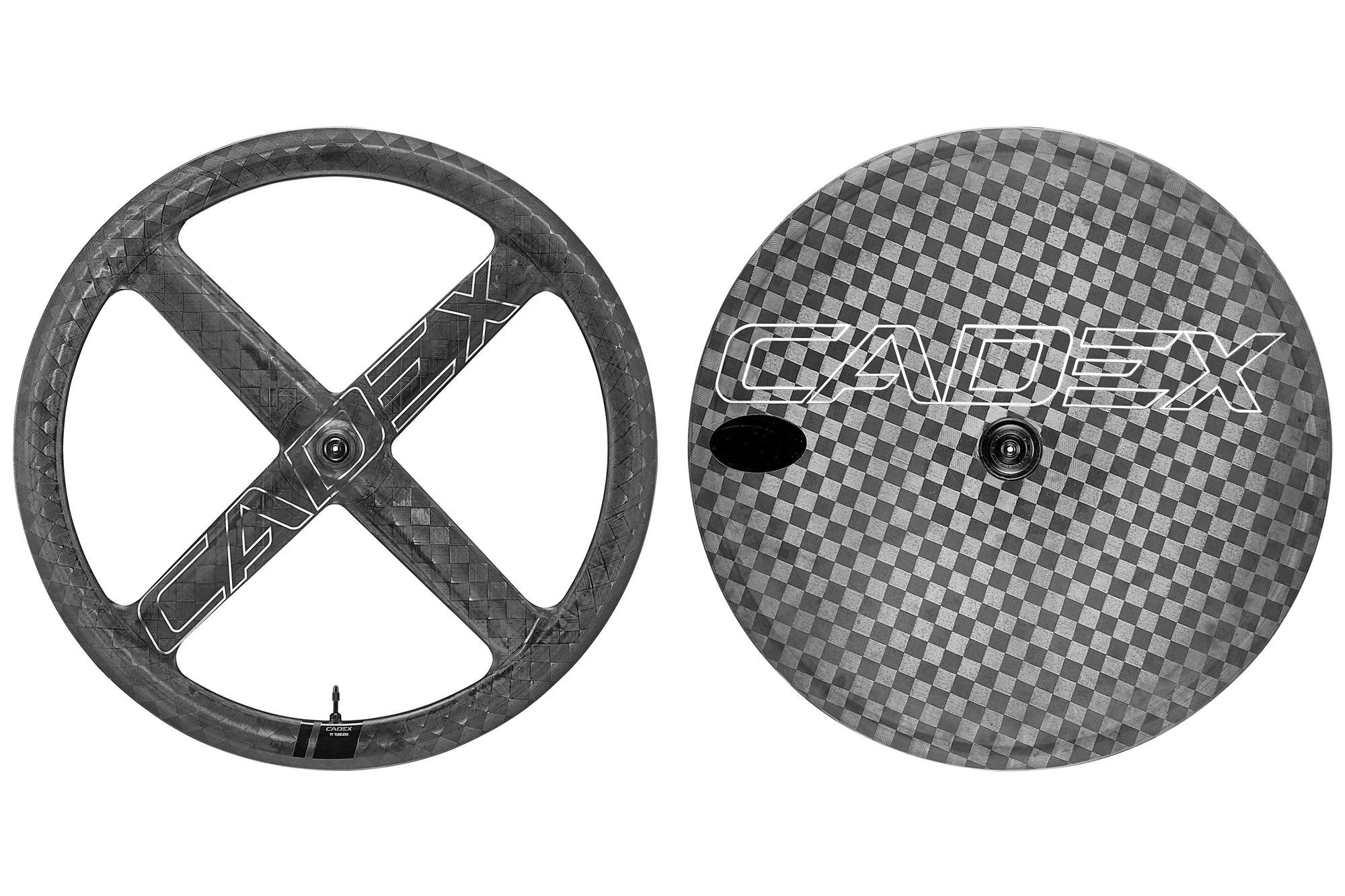
12. Cadex 4 Spoke Aero / Aero Disc
Specifications
Reasons to buy
Reasons to avoid
Cadex is a group within Giant whose focus is making the absolute no-holds-barred, best of the best, products. The Cadex Aero Disc and 4 Spoke Aero front wheel are among the results of that extreme focus. It's not just a focus on aero, though. Rolling resistance and stiffness get consideration to make sure there's nothing given away.
Cadex claims class-leading torsional stiffness that gives maximum power and superior acceleration. The rolling resistance of the hubs comes with a claim of bettering the competition by as much as 70 per cent. When conditions are right you can be sure you won't be losing any of the power your legs are capable of.
How to choose the best triathlon wheels for you
How do the wind and your weight affect wheel choice?
There is no such thing as a free lunch. Wind resistance is the single biggest factor that holds back your speed when riding your bike. Make yourself and your bike more aerodynamic and you will go faster for the same effort. You have to consider more than all-out speed though. Think about the wind and how it's going to affect both you and the bike.
If the course is going to be windy then you've got to not only consider how that affects wheel choice in relation to speed but also safety. A deeper wheel is a faster wheel but not in every situation. As the wind angle changes, different wheel depths and shapes offer different advantages. As an example, a deep "V" shaped rim is very fast into the wind. As the wind yaw angle moves, that speed advantage falls off and other considerations might be more important.
As the wind comes around the side of the bike, a thin frontal area starts showing a broad side area to the wind. You are riding a sail and now it's getting pushed in a different direction than you are riding. The wheel at the front has the ability to rotate. A sudden, hard, gust can actually turn your bike. At the rear of the bike you won't get a twisting feeling, since there's no ability to rotate, but you still experience a push. This is when you have to think about what kind of rider you are.
A lightweight rider with less than stellar bike handling skills will experience the scariest ride. If you've got more weight over the front wheel, it will have a greater resistance to twisting. If you are a better bike handler, you might find yourself more comfortable dealing with the twisting front end. Remember though every little bit of energy you spend doing something other than pedalling is making you slower.
A deep wheel, or even solid disc, on the rear is less scary. You will often see it described as a 'push feeling' vs a twisting motion. It's more manageable. More manageable doesn't mean ideal though. It can be hard to internalise what people mean when they say a 'push feeling'. In practice you might find yourself leaning into the wind as if you are cornering. It's less scary but it still takes an energy toll.
The biggest takeaway is that you need to plan and know yourself. What is the prediction for the wind on race day? Is it going to be an issue for your body? Are you prepared to handle it if it is? Depending on the answers to those questions, consider a shallower wheel setup. You will be faster if you are concentrating on pedalling, not staying on track.
How does the course composition affect wheel choice?
There's still no free lunch. The modern consensus is that for most situations aerodynamics is more important than weight. The only place weight is more important is the steepest gradients and reducing weight only gives a small advantage. Getting to and from the climb, you end up giving away those gains if you've chosen weight over aerodynamics. There is another consideration though.
Reducing weight to save time climbing has limited benefit but there are very real effort differences when changing speed. If you have a course with lots of turns and climbing, that is a course that requires lots of momentum changes. Really understanding what that means takes a deep dive into physics and Newton's laws.
Stay in the shallow side of the discussion though and the basics are that a more aerodynamic wheel is going to be heavier. A heavier wheel will have greater resistance to a change in momentum. Even simpler, a heavy wheel will take more effort to get up to speed but once it's there it will maintain it more easily.
So, while you might not save much time going to a lighter wheel for a hilly course you will save time going to a lighter wheel on a course with lots of changes. If your course has lots of twists and turns that require you to slow then accelerate, a light wheel setup might be a better choice.
Is a power meter a better investment than new wheels?
Wind resistance is the biggest force you are overcoming while cycling. There's no disputing this. Wheels are a big part of the bike's aerodynamics so it makes sense that's where you should spend money if you want to be fast, right? Not so.
The biggest contributor to aerodynamic resistance on your bike is you. Depending on the source, estimates for the total aerodynamic contribution of the bike tend to fall between 20-30 per cent. That means your body is far and away the low hanging fruit when it comes to speed. Optimise your clothing, your helmet, and your body position. After all that, you might consider looking at the aerodynamics of the bike. There's another side of the equation though.
On one side is the ability of you and your bike to slice through the wind. That part of the equation is all about minimising your power output. What if instead of minimising the power output required to slice through the wind you increased your power?
You are reading this article because you want to be faster on your bike. You want to reduce your time trial and triathlon times. It's easy to fixate on wheels to accomplish those goals. Deep wheels are so lust-worthy and you've heard since the beginning of time that wheels are the first upgrade you should make to a bike. Instead, consider a power meter before a set of wheels.
Depending on the power meter and wheels in question the cost can be similar. If your single goal is to be faster, better training and pacing will do a lot more for that goal than new wheels.
What are the best tyre choices for triathletes?
You've already optimised everything you are wearing, worked on your position on the bike, and you train constantly. You are sure you want new wheels and you are here to figure out which wheels to get. You have an understanding of what depth wheels are suited to your body type and your bike handling skills, compared to where you are riding.
With that info, you can start looking at prices and products from different brands to fit your needs. Wait, have you thought about your tyres? Lots of people have a lot to say about it but Silca has an excellent series of posts covering it.
Whatever wheels you have, consider tyre pressure, as it relates to rolling resistance and comfort. If you are optimising every last little detail, you probably want to think about rolling resistance too. The old school thought was that minimising rolling resistance meant pumping up your tyres until they were rock hard. Turns out that's not necessarily the fastest solution because roads aren't that smooth. Not only that but, as mentioned above, anything that takes you away from pedalling your bike as hard as you are able slows you down. Rock hard tyres are uncomfortable and comfort matters when it comes to being fast.
While finding the right tyre pressure is ongoing, rim width requires a decision before the purchase. Wider rims make for a wider tyre and better aerodynamic interplay between the rim and tyre. If you can go wider, you should. It will be more aerodynamic, and more comfortable. Whatever you decide to do at least consider your fitting some of the best road bike tyres as part of the puzzle that is buying a wheel.
What about full disc rear wheels?
There's a ton of info here that talks around the subject of a solid disc rear wheel. Disc rear wheels are one end of the spectrum that all wheels live on. The equation for deciding to go for a full disc is the same as going for a 65mm or 80mm wheel. The bottom line is that a disc rear is faster. Professional triathlete Cody Beals has a great summary. There is one more consideration though.
Never use anything on race day you aren't familiar with. If you can only afford one set of fast wheels, get something you can use all the time. The idea of getting out the best gear for race day sounds good but it's a recipe for disaster. Everything you use should be surprise-free. If you aren't comfortable riding with your disc rear on a regular basis during training, then don't get it.
Also, don’t forget to check the rule book for your event. Disc wheels are not always permitted, including at Ironman Kona.
What about solid spoke front wheels?
The fastest wheel is a solid disc wheel with no spokes at all. The fastest setup would be a front and rear disc wheel. Outdoors, that's not a safe setup though. What's the next best thing? A solid spoke front wheel is as close as you get to a solid disc while still being safe outside. Vision has a three spoke front wheel and it did some testing to give an idea of actual numbers. In its tests, the Vision 3-spoke V2 with 25mm tyre averaged 16.8sec faster than the Metron 40mm with 25mm tyre over a 40k TT course.
The downsides for a solid spoke wheel are the same downsides as a disc. Wind has a smaller effect on a solid spoke wheel compared to a disc wheel but it's still an issue. Look at the section above discussing wind, your weight, and your bike handling for more detail. Then, again, just as wind is an issue for a disc and a solid spoke wheel, so is weight. Look above for a deeper discussion about weight and inertia.
There is also another piece of the puzzle to think about when it comes to solid spoke and disc wheels. Without spokes, there is a reduction in vertical compliance. Meaning that, speaking broadly, these types of wheels will be less comfortable. Tyre pressure can help mitigate that but it's still an issue. When you are giving everything you have to pedalling it's important to minimise distractions.
The takeaway is a solid spoke wheel is a very specialised piece of equipment. If you've done everything you can to get as fast as possible, and the conditions are perfect, a disc rear and a solid spoke front are the fastest option. There are drawbacks though, so be sure your use makes sense.
Are 65mm or 85mm wheels a better choice?
If you aren't using a disc rear and a solid spoke front then what size wheel do you choose? All the considerations for making the choice are above but when it's time to spend the money what do you actually choose? Wheels around 60mm deep are more controllable and lighter. Wheels around 80mm are faster. How do you make the decision?
Hunt wheels has done some testing to help you out. The difference between an 82mm wheel and a 62mm wheel at 45km/h with 25mm tyres is 3.9 watts. When you see that number you either think that's a ton or barely anything and that's your decision right there. If you've already trained and optimised everything you know that 3.9 watts is huge. That amount could represent months of training and the difference between first and second place. Or it doesn't matter.
The takeaway here is that for most people wheels around 65mm are the best choice. From there you might decide to add a disc rear. If you still need that little bit of extra performance then it's time to start looking at an 85mm depth or a solid spoke front. The performance is there for the taking if you need it and can afford it.
The latest race content, interviews, features, reviews and expert buying guides, direct to your inbox!
Josh hails from the Pacific Northwest of the United States but would prefer riding through the desert than the rain. He will happily talk for hours about the minutiae of cycling tech but also has an understanding that most people just want things to work. He is a road cyclist at heart and doesn't care much if those roads are paved, dirt, or digital. Although he rarely races, if you ask him to ride from sunrise to sunset the answer will be yes.
Height: 5'9"
Weight: 140 lb.
Rides: Salsa Warbird, Cannondale CAAD9, Enve Melee, Look 795 Blade RS, Priority Continuum Onyx

